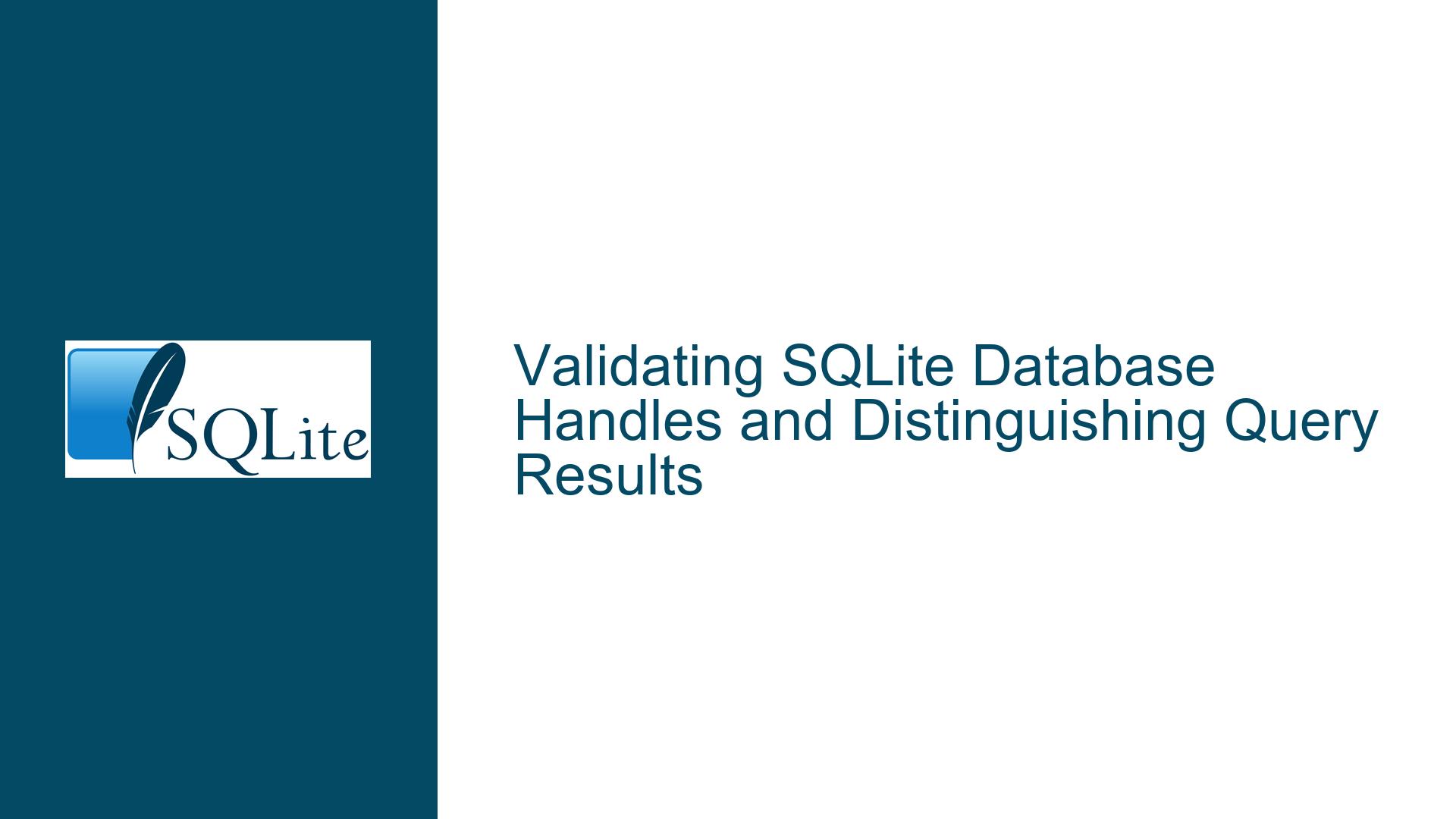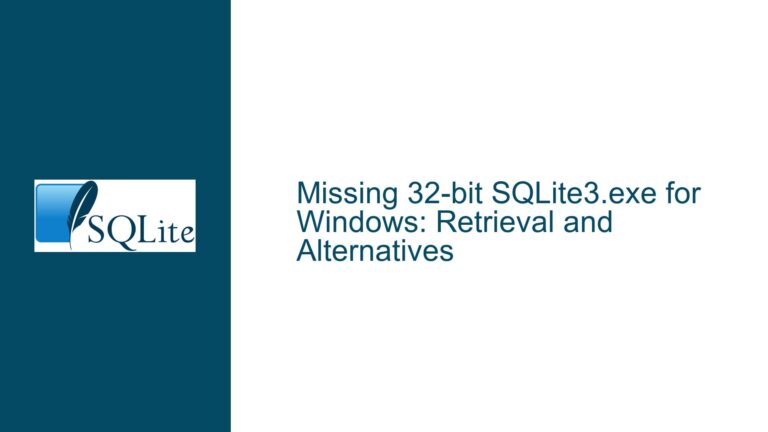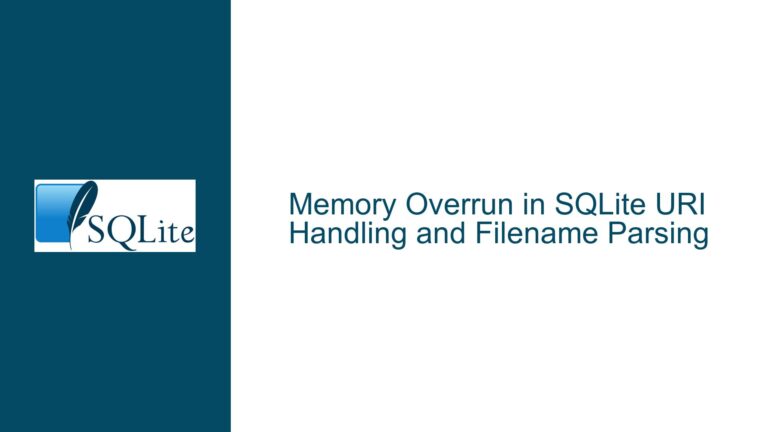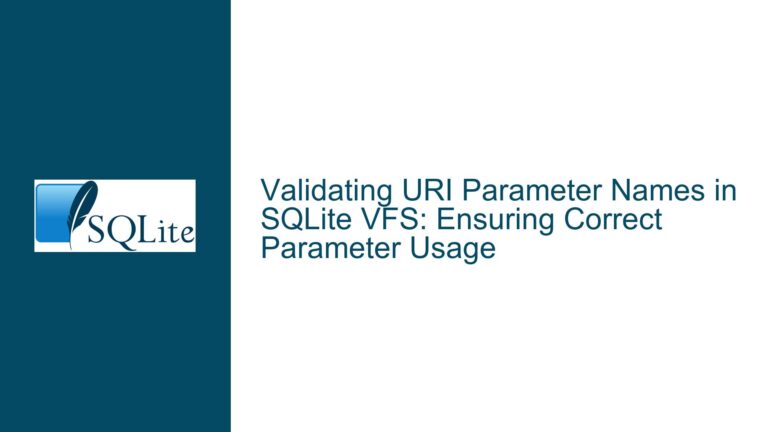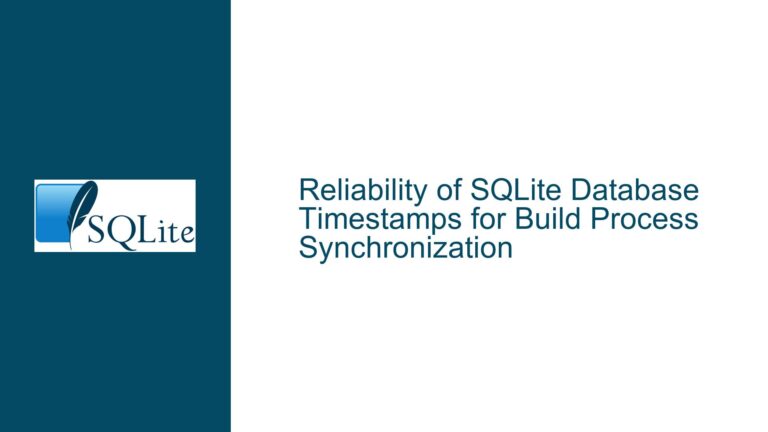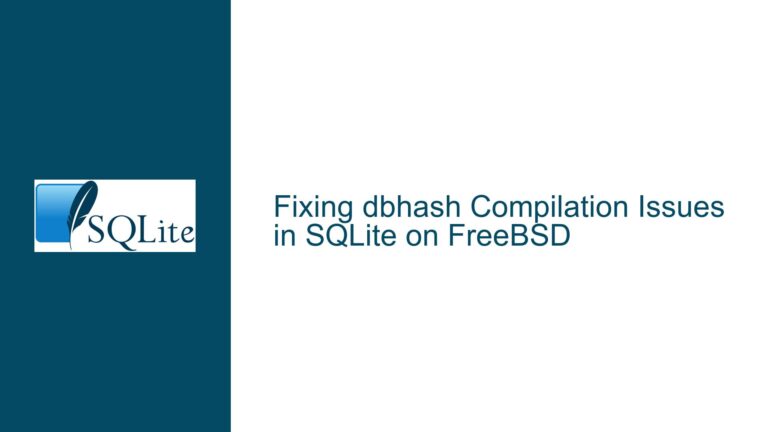Validating SQLite Database Handles and Distinguishing Query Results
Understanding Database Handle Validation and Query Result Ambiguity
The core issue revolves around validating SQLite database handles and distinguishing between two scenarios: when a query returns no rows due to an invalid database handle and when a query returns no rows because there are genuinely no rows to return. This problem arises particularly when working with multiple database handles, where the potential for human error (such as transposing digits in handle values) increases. Additionally, there is a need to ensure that the specified schema in a query is valid and that the database handle points to the intended database.
SQLite does not provide a built-in function to directly validate a database handle. Instead, the responsibility falls on the developer to implement robust mechanisms to ensure that the handle is valid and that the query is executed against the correct database. This post will explore the nuances of database handle validation, the implications of invalid handles, and practical solutions to address these challenges.
The Nature of Database Handles and Their Validation
A database handle in SQLite is a pointer to an instance of the sqlite3 structure, which represents an open database connection. This handle is obtained through the sqlite3_open() or sqlite3_open_v2() functions. Once a handle is obtained, it is used in subsequent SQLite API calls to interact with the database. However, SQLite does not provide a direct API to validate whether a given handle is still valid or points to the intended database.
The absence of a direct validation mechanism can lead to ambiguity, especially when working with multiple databases. For example, if a developer accidentally transposes digits in a handle value, the resulting handle may point to an entirely different database or an invalid memory location. In such cases, executing a query with the incorrect handle may not produce an error but instead return no rows, making it difficult to distinguish between a valid query with no results and an invalid handle.
To address this, developers must implement indirect validation techniques. One common approach is to execute a simple query, such as SELECT 1;, and check the return code. If the query executes successfully, it indicates that the handle is valid. However, this method has limitations. For instance, it does not verify that the handle points to the intended database, only that it is a valid SQLite database handle.
Another approach is to query the sqlite_schema table (formerly known as sqlite_master), which contains metadata about the database’s schema. By checking for the presence of specific tables or schema elements, developers can infer whether the handle points to the correct database. This method provides a higher level of confidence but requires prior knowledge of the database’s schema.
Practical Solutions for Handle Validation and Query Result Distinction
To effectively validate database handles and distinguish between query result scenarios, developers can adopt a combination of techniques. First, maintaining a mapping of database names to their corresponding handles can help prevent handle transposition errors. This mapping can be implemented as a dictionary or hash table, allowing developers to retrieve the correct handle based on the database name.
Second, executing a simple validation query, such as SELECT 1;, can serve as a preliminary check for handle validity. While this does not confirm that the handle points to the intended database, it can quickly identify handles that are clearly invalid. For a more robust validation, developers can query the sqlite_schema table to verify the presence of expected schema elements.
To address the ambiguity between no rows returned due to an invalid handle and no rows returned due to an empty result set, developers can implement a two-step validation process. First, validate the handle using a simple query. If the handle is valid, execute the intended query and check the return code. If the return code indicates success but no rows are returned, it can be inferred that the result set is genuinely empty.
Additionally, developers can leverage SQLite’s error codes and messages to gain more insight into query execution. For example, if a query fails due to an invalid handle, SQLite will return an error code such as SQLITE_ERROR or SQLITE_CORRUPT. By examining these codes, developers can distinguish between handle-related errors and other types of errors.
In summary, while SQLite does not provide a direct method for validating database handles, developers can implement a combination of techniques to ensure handle validity and distinguish between query result scenarios. By maintaining a mapping of database names to handles, executing validation queries, and leveraging SQLite’s error codes, developers can mitigate the risks associated with invalid handles and ambiguous query results.
